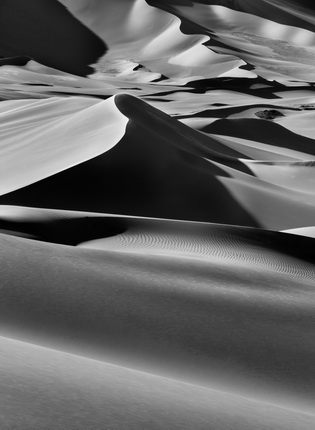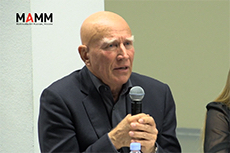Genesis

A group of Waura Indians fish in the Puilanga Lake near their village. Upper Xingu. Mato Grosso State. Brazil. 2005. Photograph by Sebastião SALGADO / Amazonas images
Elephants are hunted by poachers in Zambia, so they are scared of humans and vehicles. When they see an approaching car, they usually run quickly into the bush. Kafue National Park. Zambia. 2010. Photograph by Sebastião SALGADO / Amazonas images
The Mursi and the Surma women are the last women in the world to wear lip plates. Mursi village of Dargui in Mago National Park, in the Jinka Region. Ethiopia. 2007. Photograph by Sebastião SALGADO / Amazonas images
Marine iguana (Amblyrhynchus cristatus). Galápagos. Ecuador. 2004. Photograph by Sebastião SALGADO / Amazonas images
Teureum, sikeirei and leader of the Mentawai clan. This shaman is preparing a filter for sago, with the leaves of this same sago tree. Siberut Island. West Sumatra. Indonesia. 2008. Photograph by Sebastião SALGADO / Amazonas images
Large sand dunes between Albrg and Tin Merzouga, Tadrart. South of Djanet. Algeria. 2009. Photograph by Sebastião SALGADO / Amazonas images
Typically, the women in the Zo’é village of Towari Ypy use the “urucum” (Bixa orellana) red fruit to color their bodies. Pará State. Brazil. 2009. Photograph by Sebastião SALGADO / Amazonas images
Southern Right whales (Eubalaena australis), drawn to the Valdés Peninsula because of the shelter provided by its two gulfs, the Golfo San José and the Golfo Nuevo, often navigate with their tails upright in the water. Valdés Peninsula, Argentina. 2004. Photograph by Sebastião SALGADO / Amazonas images
Iceberg between Paulet Island and the South Shetland Islands on the Weddell Sea. Antarctic Peninsula. 2005. Photograph by Sebastião SALGADO / Amazonas images
When the weather is particularly hostile, the Nenets and their reindeer may spend several days in the same place. North of the Ob River, inside the Arctic Circle. Yamal Peninsula. Siberia. Russia. 2011. Photograph by Sebastião SALGADO / Amazonas images
South Sandwich Islands. Chinstrap penguins (Pygoscelis antarctica) on an iceberg located between Zavodovski and Visokoi islands. South Sandwich Islands. 2009. Photograph by Sebastião SALGADO / Amazonas images
View of the junction of the Colorado and the Little Colorado from the Navajo territory. The Grand Canyon National Park begins after this junction. Arizona. USA. 2010. Photograph by Sebastião SALGADO / Amazonas images
Moscow, 18.02.2016—26.06.2016
exhibition is over
Mouravieff-Apostol House & Museum
Staraya Basmannaya ulitsa, 23/9 bld.1
ma-housemuseum.ru
Share with friends
Exhibition curator and designer: Lelia Wanick Salgado
For the press
Genesis is a photographic journey into the planet — an expedition to rediscover the mountains, deserts and oceans, the animals and peoples that have so far escaped the imprint of modern society. The land and life of a still pristine planet. Yet Genesis is also a project that speaks urgently to our own age. By portraying the breathtaking beauty of a «lost» world that somehow survives, it proclaims: this is what is in peril, this is what we must save.
Genesis is Sebastião Salgado’s third long-term exploration of global issues, following Workers and Migrations, his examinations of the human toll wrought by radical economic and social change. This time, he is addressing our natural environment in offering a love poem in images to the majesty and fragility of our planet.
Working as always in black-and-white, Salgado has built his dossier during more than 30 different trips to distant corners of the globe. Each sortie from his base in Paris took several weeks and involved light aircraft, helicopters, seagoing vessels and canoes as well as long hikes through very difficult terrain in extremes of heat and cold. Having begun these voyages in 2004, Salgado has completed Genesis at the end of 2011.
In considering how to present Genesis, we initially opted for a thematic approach highlighting the earth’s geophysical origins, its animals, primitive peoples and early societies. But the very remoteness of regions visited by Salgado meant that they often contributed images to several themes. We have therefore decided to organize the photographs into broadly-defined eco-systems which, we believe, best mirror how nature works. Our aim is to open the eyes of the public to the marvels to be found on earth, not only those that we have had the privilege of finding and recording for Genesis, but also those in the lakes and hills and the parks and gardens that are within easy reach of our homes and represent our most frequent contact with Nature. After all, it is in our daily lives that the battle for conservation begins. For this very reason, our hope is that those who come to view and debate Genesis will do so, not simply as interested observers but as active stakeholders in a universal heritage that is crying out for our care and attention.
General information partner |







